|
   |
|
Page 3 |
Newsletter 122, Autumn 2018 © Hampshire Mills
Group |
|
North Wales Study Tour, May 2018 - Part 1
Ruth Andrews
Pictures by Ruth Andrews and Ashok Vaidya
|
|
First, lots of thanks to Andy Fish who not only
arranged the visits and accommodation, but also did
all of the driving. As you will see, it was a very
varied and educational tour.
Pontcysyllte Aqueduct
by Ashok Vaidya |
|
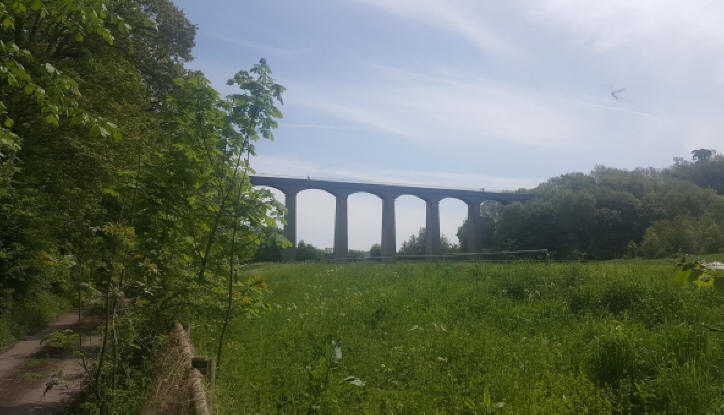
|
This is the Pontcysyllte Aqueduct on the Llangollen
Canal, 1000 feet in length, and supported by metal
arches on 18 masonry piers as it crosses the deep
valley of the river Dee. Designed by civil
engineers Thomas Telford
and William Jessop,
it opened in 1805 and was used by commercial traffic
up until it was formally closed in 1944.
The aqueduct survived and is now a thriving UNESCO
World Heritage site popular with canal boaters and
tourists alike.
Our group boarded a narrow boat from the aptly named
“Jones the Boats” yard and spent a glorious hour
cruising gently in warm sunshine across the aqueduct
and back again. |
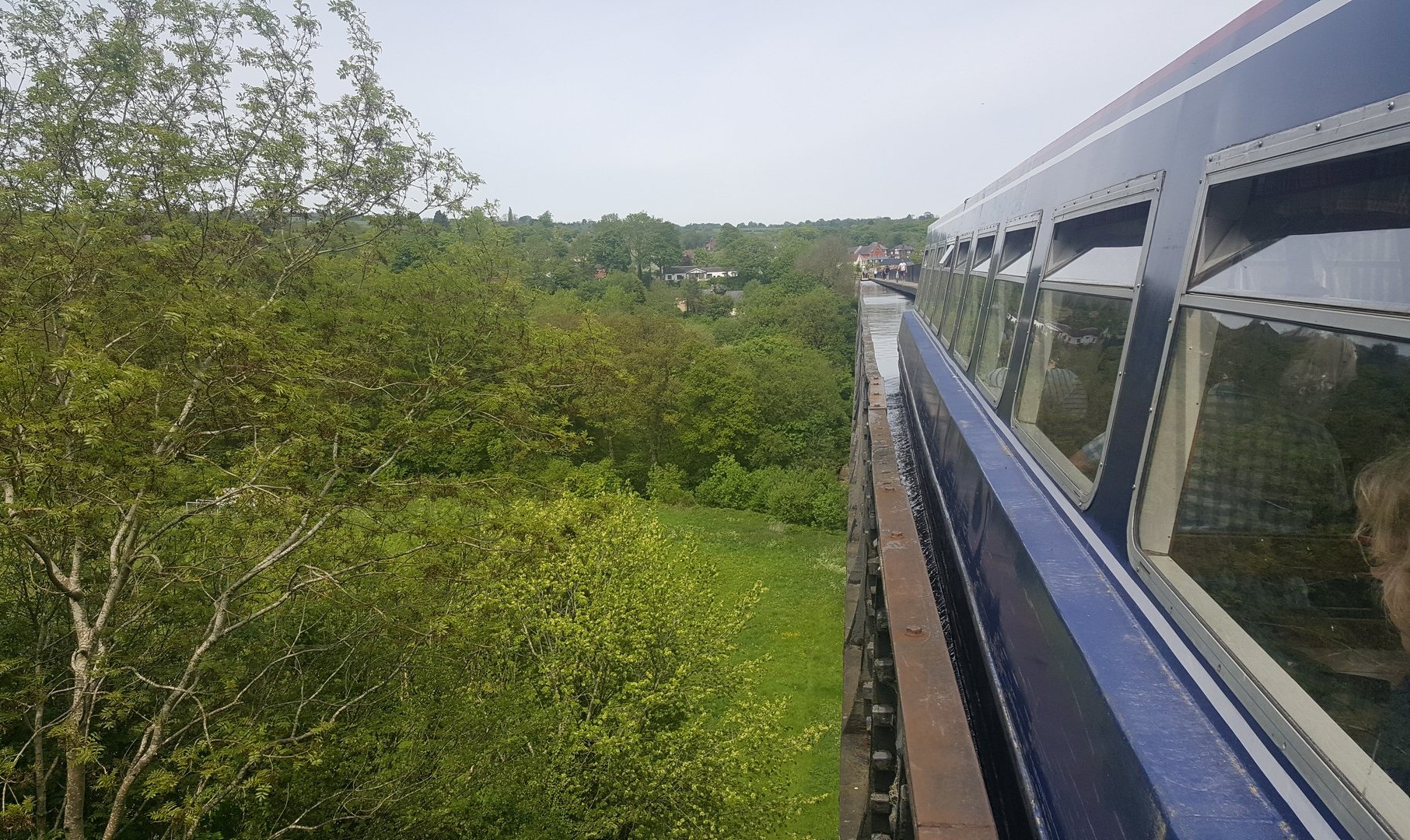 |
The bare facts do not prepare you for the surreal
feeling of being on a boat, afloat on a strip of
water barely wider than your craft, and looking over
the edge to the valley floor over a hundred feet
below.With the edge of the cast iron trough just a
few inches above the water level, and well below
the freeboard of the boat it felt like being
suspended in mid-air, flying – or should it be
sailing – high above the verdant valley far below.
Ruth: I once walked across and that is not an
experience I wish to repeat.
|
|
Ynys Y Pandy Slate Mill
Our first ‘wild’ visit was to the water-powered
Ynys-y-Pandy slate saw mill of 1856, which is up a
minor road beyond Portmadoc. (Andy is a very
trusting driver and was relying on my map reading as
the satnav coverage was inadequate.)
|
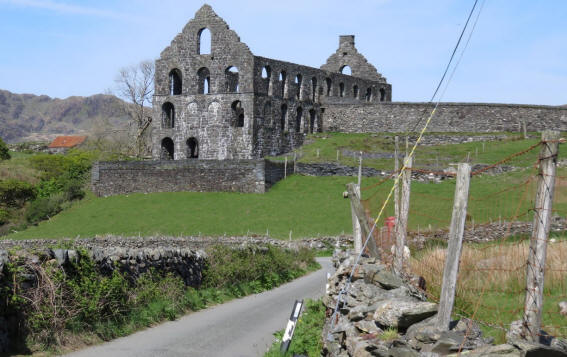 |
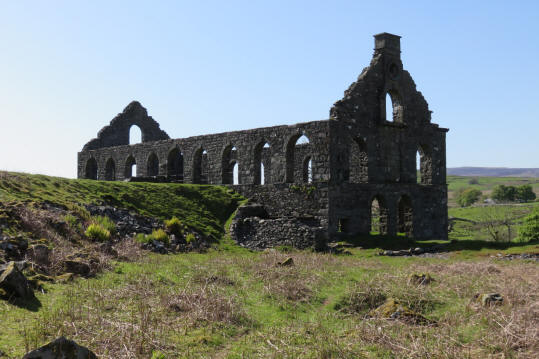 |
|
The mill was built around 1856 by Evan Jones of
Garndolbenmaen and probably designed by the Scottish
civil engineer Sir James Brunlees. It is
ingeniously planned so that the natural slope of the
site assisted the manufacturing process. A deep
wheel pit inside the building accommodated a large
overshot water wheel (26ft in diameter), and on the
south side a long curving ramp brought branches of
the tramway from Gorseddau Quarry into the mill at
two different levels, serving the middle and upper
floors.
The mill specialised in the production of slate
slabs for floors, dairies, troughs, and urinals. In
1860 its heyday, it was producing over 2000 tons of
finished slate goods per annum, but seven years
later that was down to 25 tons per year, due to the
poor quality of the quarried slate. The business
struggled on but went into liquidation four years
later in 1871. The building then provided a venue
for the Eisteddfodau until the roof was removed
around 1906.
Of Gorseddau Quarry, it has been said that
everything was available on site to make a
successful quarry apart from decent slate, and that
it exemplifies how not to spend money on a slate
quarry.
We then drove on to Bangor and checked in to
Travelodge, our home for the next 3 nights.
Llynnon Windmill
by Ashok
Vaidya |
|
On Friday, we ventured on to Anglesey, starting with
a visit to Melin Llynnon, now owned by Anglesey
County Council. Built in 1775-6 for a cost of £529
11s, or about £50,000 today, it ran until 1918 when
a storm damaged the cap so that it could no longer
turn. Then it could be operated only when the wind
was from the south west (fortunately the prevailing
direction).
It became increasingly dilapidated and finally a
storm in 1954 ripped the cap off. Ideas to restore
a windmill on Anglesey emerged soon after but it was
not until 1978 that the Council purchased the mill
and restored it to life again in 1984, at a cost of
around £120,000.
|
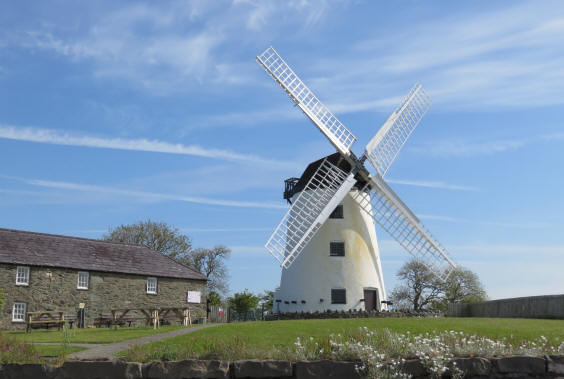 |
|
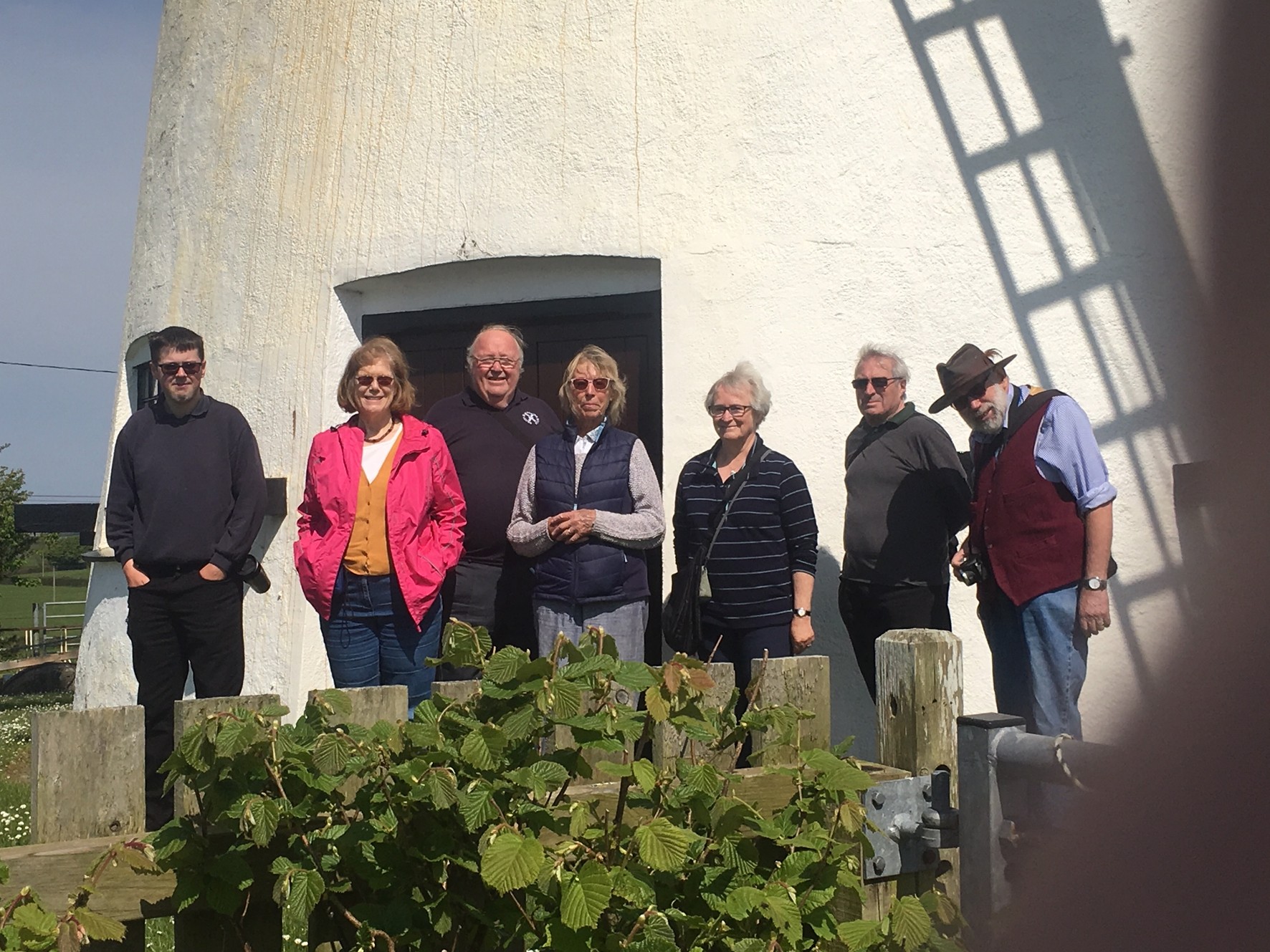
|
The fully restored Llynnon windmill was particularly
impressive on a bright sunny morning as we arrived.
Our guide (left in this group photo) was a
very enthusiastic and knowledgeable county council
employee who escaped the office to show us round, a
task he clearly relished. |
|
It is now a popular tourist attraction with a
thriving tea room and shop, which we patronised, of
course.The mill is in first class condition and
operates to show visitors how a flour mill works.
These photos show the tentering gear for one of the
3 sets of stones, the stones floor, and the brake
wheel and windshaft.
Ruth: It seems a
pity that funding cuts may be going to make the
windmill’s future uncertain. It is the only
restored windmill on Anglesey which at one time had
some 50 windmills, including one which also had an
integral water wheel (for calm days?).
|
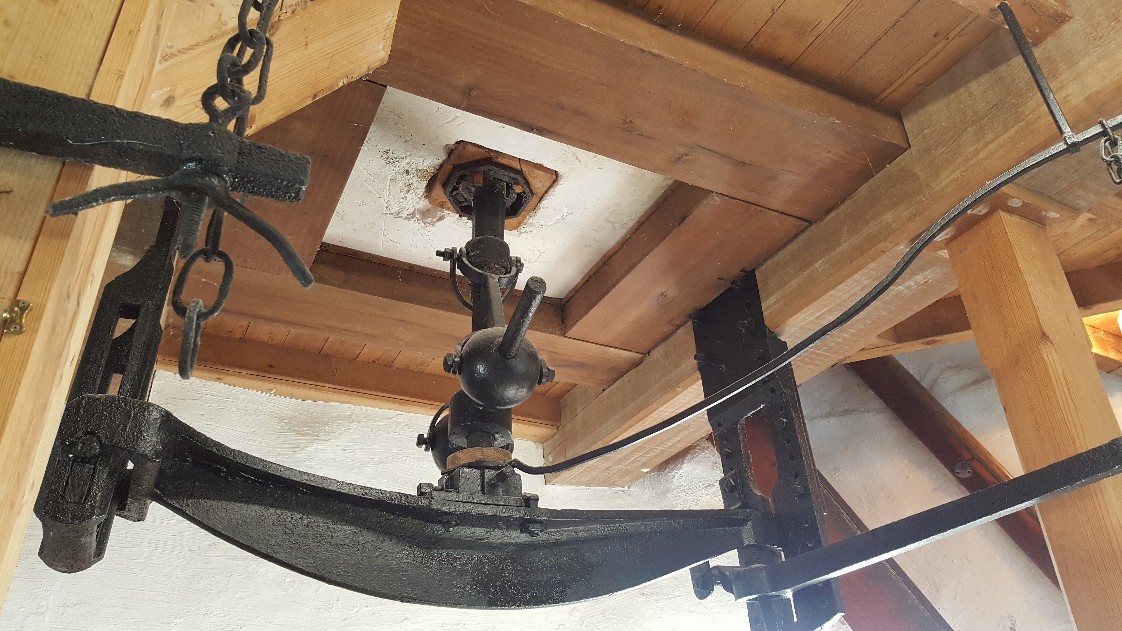
|
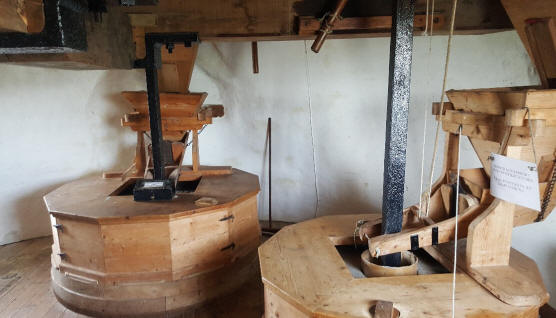 |
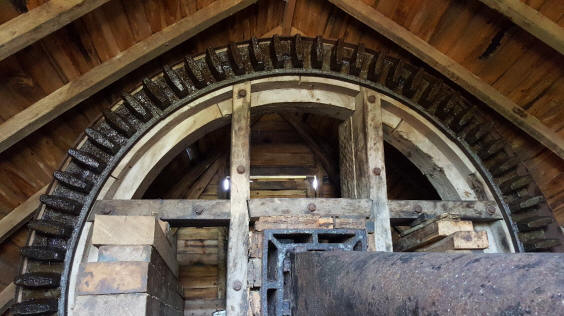 |
|
Copper Kingdom
Next we drove to the tiny port of Amlwch to visit
Copper Kingdom, the visitor centre for Mynydd Parys
and its famous copper mine. The centre has been
built inside one of the massive ore bins on the
quayside.
Keith Andrews 2009 |
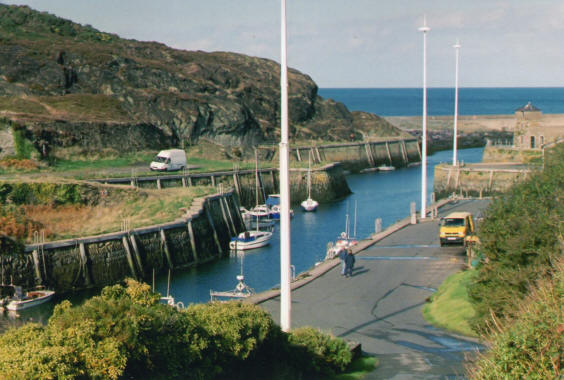
|
|
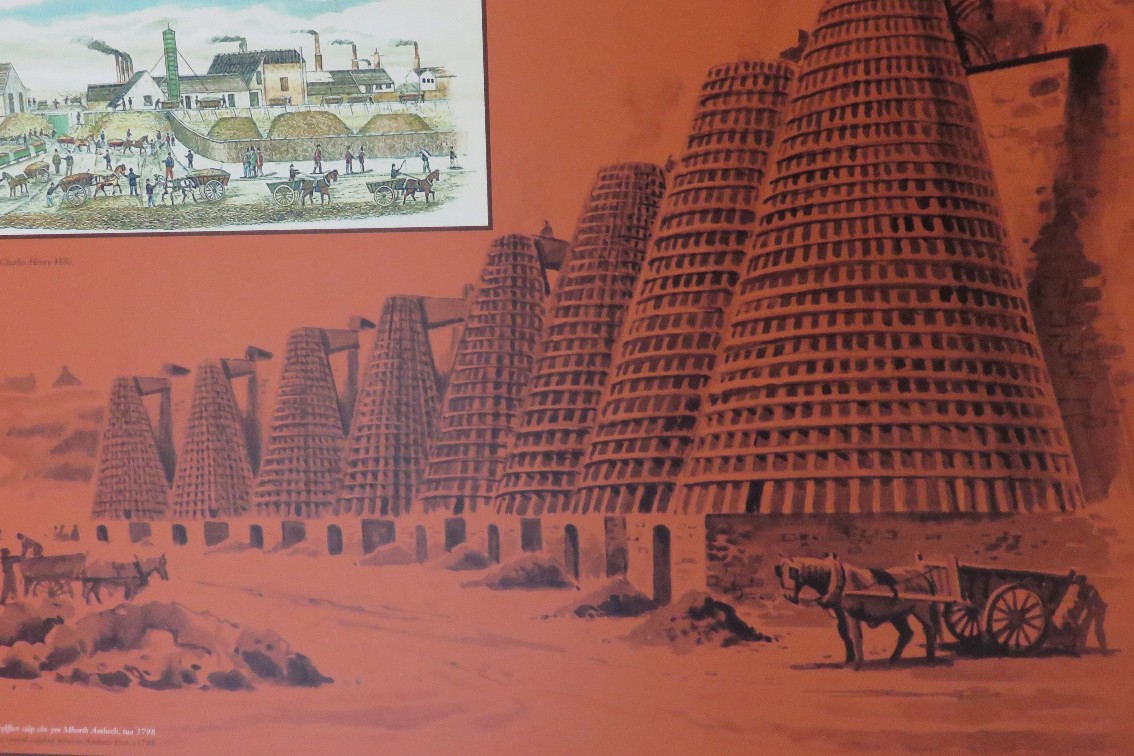
|
It is very hard to believe that when the mine was in
use the port had huge conical calcining kilns for
extracting sulphur (a valuable by-product)as well as
smelters, a lime kiln, and a prominent windmill.
The port was once filled with the many ships used to
bring in coal and ship out ore and copper.
After a snack lunch (we had had a large breakfast)
we drove up the mountain to view the world famous
opencast copper mine.
from
the Copper Kingdom exhibition |
|
Parys Mountain
Some of us had visited here many years ago on an IA
field trip. The windmill was used for pumping or
to assist a steam engine; it was built in 1878 and
had 5 sails.
A lake in the great opencast was drained in 2003,
making a lot of the underground workings accessible,
but spoiling the well-known view of the
partly-flooded mine. |
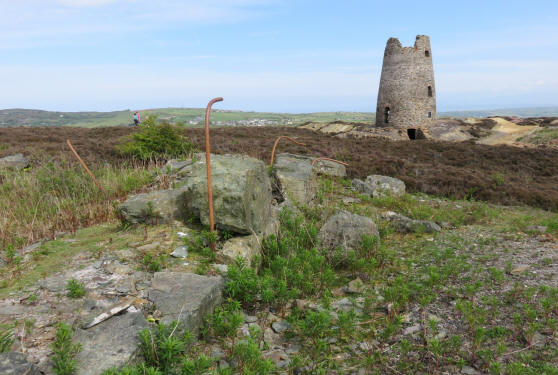 |
|
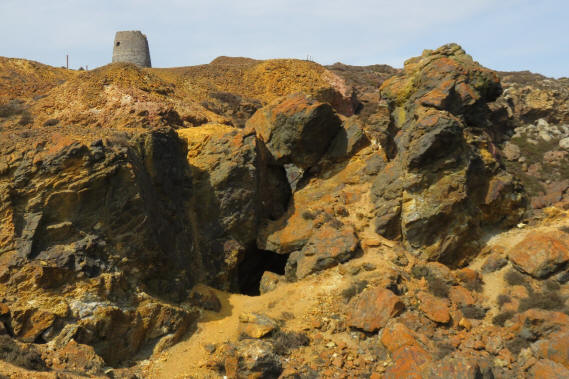 |
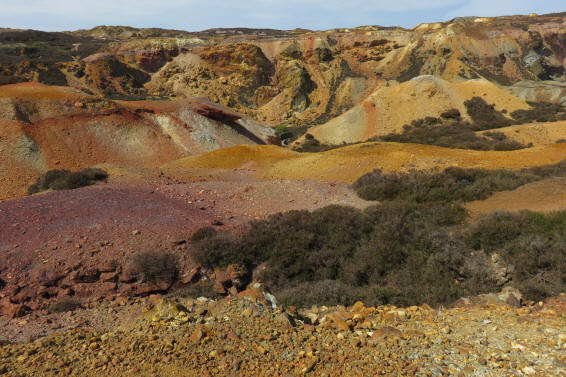
|
|
It was a glorious day and the sunshine picked out
the amazing range of colours in the spoil heaps –
caused by iron, not copper. The mine still causes a
lot of mineral pollution and any standing water
quickly becomes very acidic. 40% of the Irish Sea’s
heavy metal content derives from Mynydd Parys
run-off. This sampling pond is full of minerals.
In 1988, Anglesey Mining Company opened a 300m shaft
to the west of the old workings; its headgear is a
local landmark but at present it is not in use.
|
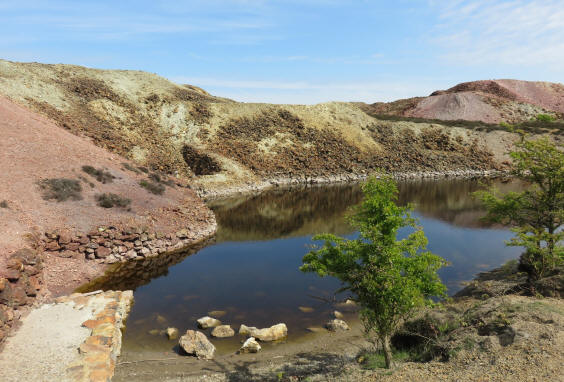 |
 |
|
| |
   |
|
|










